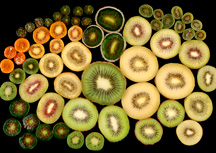A patch of broad beans in the winter garden is a fine thing. We have 'unpodding' sessions at the kitchen bench. Removing the beans from their pods is a little like taking babies out of sleeping bags. What is in those skins because my fingers are stained nearly black afterwards.
Unsurprisingly, a lot of people tell me they absolutely cannot stand them as a vegetable. For some it's the texture, for others it's flavour, and I suspect a fair few simply find them unappealing to look at when they've been boiled in their flubby grey skins. Cooked like this, they remind me of 'timptees' , a term my father coined to describe wrinkly fingers and toes which have been soaking in the bath too long. It's a bit fiddly to remove the grey skins, but the green bean inside is such a tempting, lush colour I think it's definitely worth the bother. The Italians have crafted a few different recipes using peeled beans - including puree's. Broad bean purée with wild chicory is a typical Puglian dish in Italy. including a 'broad bean pesto' style recipe, which can be used as a stir-through pasta sauce. I highly recommend this. In the US, they're combined with sweetcorn to make succotash. I was quite fascinated to read that the European way of preparing beans as an immature and fresh green vegetable is relatively new.
Vicia faba, the broad or fava bean, is one of the oldest known plants in cultivation, dating back to about 6000 BC. It's an ancient staple food of many middle eastern and North African cuisines, and they tend to use it fully mature, once it has dried to a hard bean. In Egypt, it is used in two national dishes - ful madames (literally 'buried beans') and ta'amia, an ancient falafel dish considered superior in every way to the chickpea concoctions favoured further north. In Ethiopia, beans are ground into a flour known as shiro and used as a staple food.
So now I know what to do with all those beans which get missed during harvest and transform into "has beens" as my mother would say.
I grew some of the English variety of Crimson-flowered broad beans last year for the Central Tree Crops Research Trust, and they went very well. The plants suffered a bit toward the end of the summer period from fungal diseases, but the seed crop matured and I harvested about 40 good seeds for every seed I had originally planted. And they were just a marvellous sight in the vegetable patch. The crimson-flowers were highly ornamental. I kept a little of the seed back for planting again this year, but I may not have needed to, as it appears to have self-seeded pretty well from discarded pods.
I found some roasted broad bean snacks from China the other day in my local Asian market. Great tasting, a little addictive. Every bit as good as peanuts. I'm going to have a go at the following recipe...
If using fresh beans, eliminate the soaking and boiling step and try roasting straight from the pod.
125g dried split broad beans
1 tsp coarse sea salt (iodised)
4 tsp olive oil
1. Soak the beans in water for 8 hours, or overnight.
2. Drain and rinse well. Put in saucepan and cover with 500mls of water.
3. Bring to a boil and boil for 7 minutes to soften them slightly.
4. Drain and allow to cool slightly.
5. Pre-heat the oven to 180 degrees C.
6. Mix the salt and olive oil and toss the beans in the mixture until coated.
7. Spread the beans on a baking tray (greaseproof paper will help to stop them sticking to the tray) and roast for 25 minutes, or until golden.
8. Allow to cool on the tray and try to leave a few for everyone else to try!
It would be worth experimenting with a few different spices as well, such as paprika.
I've been given some purple seeded beans by a gardening friend this year. Not sure what they are. May be the Estonian purple-seeded bean, or the variety Red Epicure which has white flowers. It important to plant different varieties at different times to keep varieties pure, but it could be interesting to see what results from crosses between the different varieties. Can learn a bit from others in this area:
http://topveg.com/2009/08/broad-bean-midwinter-a-new-strain/








.jpg)











